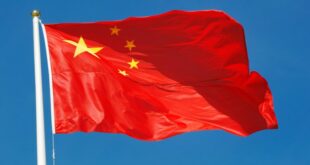 Photo Credit: PNA
Photo Credit: PNA
President Ferdinand Marcos Jr. has ordered the Department of Agriculture to use the excess collections of the Rice Competitiveness Enhancement Fund (RCEF) to help rice farmers.
The President, in a meeting with Agriculture officials recently, said that the excess collections beyond the P10 billion requirement of the RCEF should be used to provide rice farmers drying, mechanization, and other equipment to help them sustain their productivity, the Presidential Communications Office on Sunday.
The RCEF is collected from revenues gathered from tariffs on imported rice, as provided for under Republic Act 11203 (Rice Tariffication Law).
The RCEF is to be used for programs and projects aimed at increasing the competitiveness and output of palay farmers.
In the same meeting with DA officials, Marcos also ordered the Department of the Interior and Local Government (DILG) to instruct local government units (LGU’s) to rationalize the “pass-through” fees and other transport costs imposed on vehicles transporting agricultural goods like rice and other products.
President Marcos issued Executive Order (EO) No. 41 on Sept. 25 prohibiting the collection of toll fees and charges from vehicles transporting goods or merchandise while passing through national roads and other thoroughfares not constructed or funded by LGUs.
The President issued the EO to reduce the cost of transportation and logistics.
To help 2.3 million small rice farmers, Marcos also recently approved the release of P12.7 billion to fund the P5,000 financial assistance under the government’s Rice Farmers Financial Assistance (RFFA) program.
The assistance will help small farmers affected by the lifting of the price cap on regular and well-milled rice, the President said.
“The lifting of the price cap is not something we just did for the sake of doing it. This comes with further assistance and support for our agricultural sector,” the President said.
“We will increase what we get from the Rice Tariffication Law and give this to farmers in the form of equipment, tractors, harvesters [and] dryers,” Marcos said.
Finance Secretary Benjamin Diokno, meanwhile, said the lifting of the price ceilings on regular and well-milled rice was appropriate, given the improving supply of the grain.
“[The price cap] was done at the time of insufficient supply of rice. But now the supply is improving because of the start of the harvest season and the arrival of rice imports,” Diokno said in a briefing.
Bureau of Plant Industry (DA-BPI) director Glenn Panganiban said in a briefing that global rice prices have slowly decreased, and local supply was expected to increase as the harvest season started.
Panganiban also said the harvest was expected to reach 1.9 million metric tons of rice in October alone.
During a briefing last week, National Statistician and Civil Registrar General Dennis Mapa said rising rice prices fueled September inflation of 6.1 percent in September.
Food inflation alone rose to 10.0 percent in September from 8.2 percent in August. This is due to the higher inflation of rice (17.9 percent from 8.7 percent), meat (1.3 percent from -0.1 percent), fruits (11.6 percent from 9.6 percent), and corn (1.6 percent from 0.9 percent). — Julito G. Rada
*****
Credit belongs to: www.manilastandard.net
 Atin Ito First Filipino Community Newspaper in Ontario
Atin Ito First Filipino Community Newspaper in Ontario






